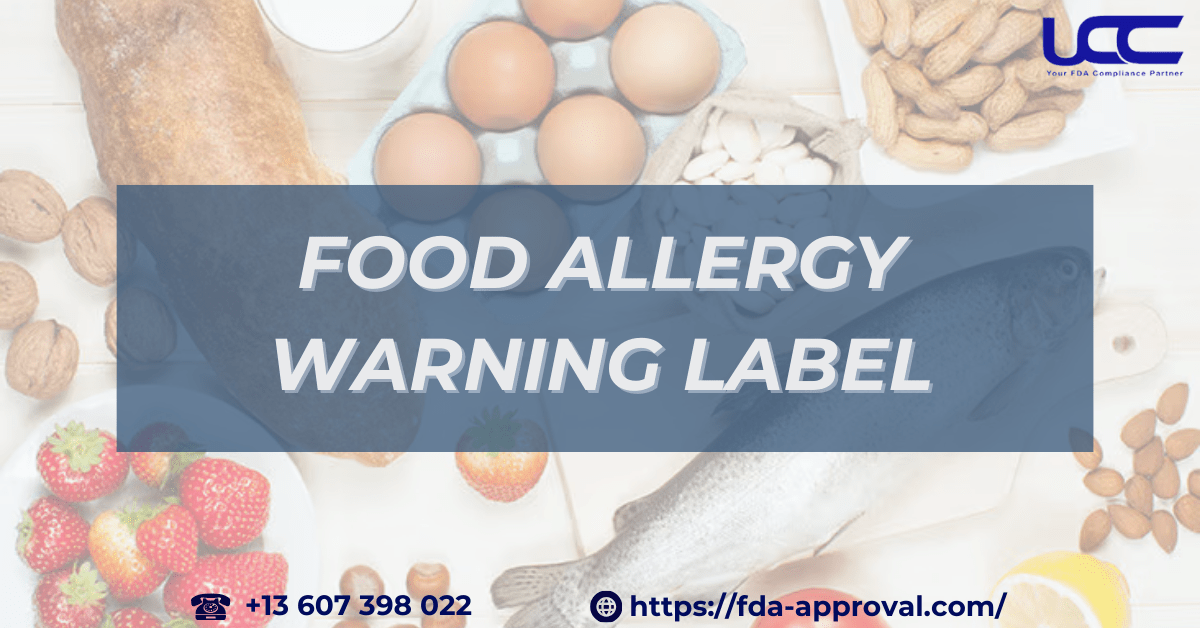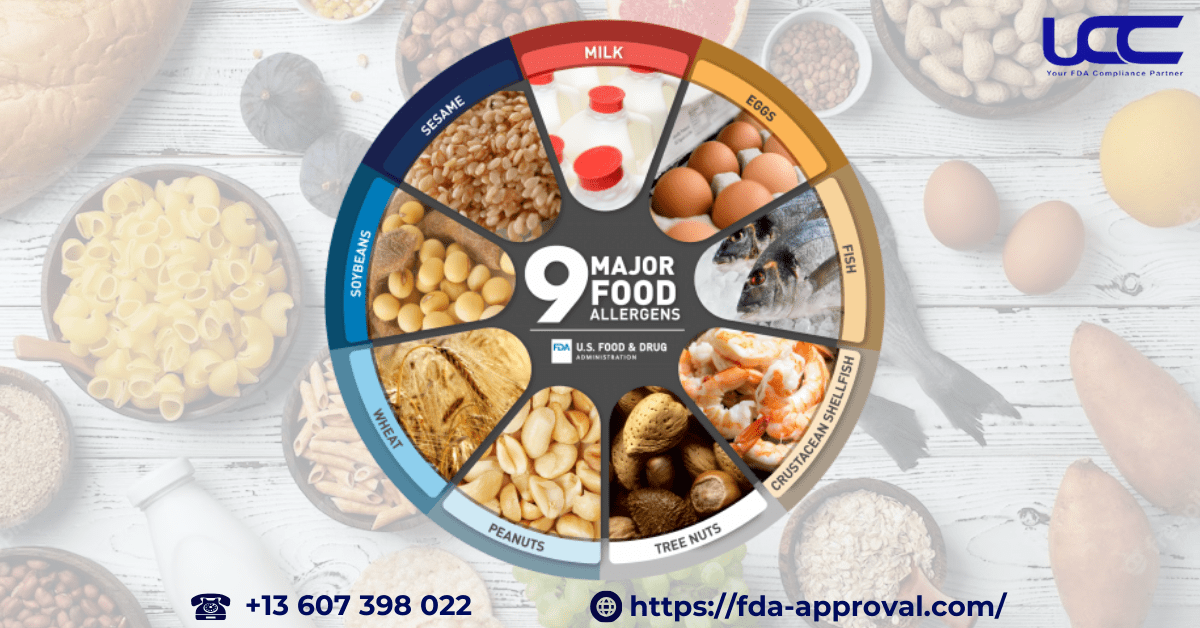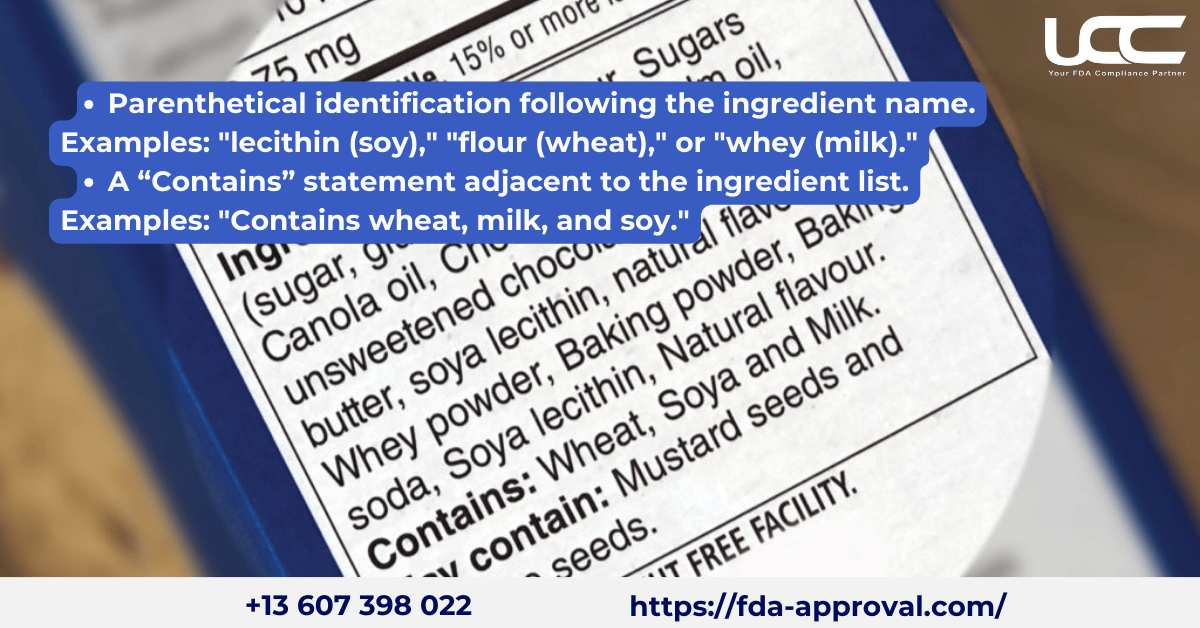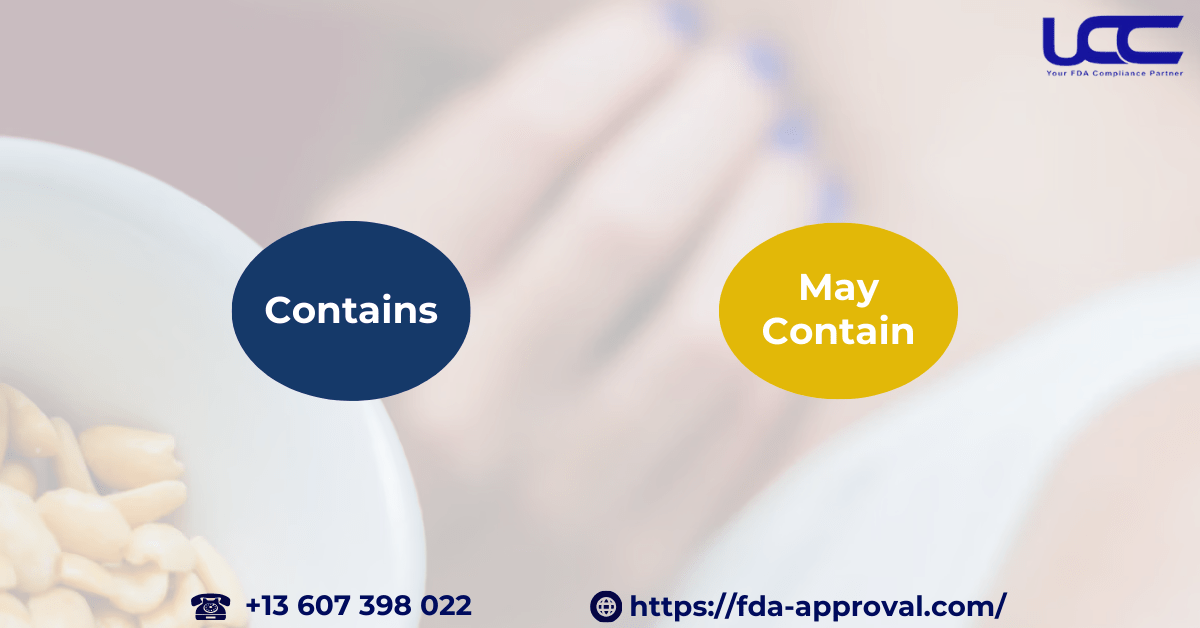Food allergies impact millions and require careful attention to labeling for safety. To address this, the FDA enforces strict guidelines for food allergy warning labels on packaged foods. In this article, UCC will highlight major allergens, FDA Food Allergy Warning Label requirements, and essential compliance practices.

1. Overview of Food Allergy Warning Label
To safeguard individuals with food allergies and sensitivities, the FDA enforces stringent regulations requiring companies to disclose all ingredients on packaged food and beverages. For specific allergens or hypersensitivity triggers, these labeling requirements become more detailed and precise.
Although many foods can trigger allergic reactions, the Food Allergen Labeling and Consumer Protection Act (FALCPA) of 2004 designates eight primary food allergens: milk, eggs, fish, crustacean shellfish, tree nuts, peanuts, wheat, and soybeans.
Additionally, the Food Allergy Safety, Treatment, Education, and Research (FASTER) Act, signed into law on April 23, 2021, designated sesame as the ninth major food allergen in the U.S. This regulation, part of the FDA Food Allergy Warning Label guidelines, took effect on January 1, 2023. However, it is essential to note that some food products may not yet include sesame as an allergen on their labels.
2. Major Food Allergens Identified by the FDA

The FDA Food Allergy Warning Label identifies nine foods, along with their protein-containing derivatives, as major allergens responsible for most severe allergic reactions:
- Milk
- Eggs
- Fish (e.g., bass, flounder, cod)
- Crustacean shellfish (e.g., crab, lobster, shrimp)
- Tree nuts (e.g., almonds, pecans, walnuts)
- Wheat
- Peanuts
- Soybeans
- Sesame
3. FDA Food Allergy Warning Label Requirements
Under FALCPA, Food Allergy Warning Label must clearly identify the source of all major allergens used in production. Compliance is achieved by disclosing the allergen source in at least one of the following ways:
- Parenthetical identification following the ingredient name.
Examples: “lecithin (soy),” “flour (wheat),” or “whey (milk).” - A “Contains” declaration next to the ingredient list.
Examples: “Contains wheat, milk, and soy.”
The “Contains” statement, when present, must include all major allergens contained in the product. However, not all products list allergens in this format. For thoroughness, consumers are advised to review the complete ingredient list to ensure allergen identification.
Important: If any allergen appears in the ingredient list, the product should be avoided.

It is also essential to recognize that some ingredient names may not directly specify their allergenic source. For instance, terms such as casein, sodium caseinate, and whey refer to milk proteins. In such cases, the allergen’s source (e.g., milk) needs to appear only once in the ingredient list to meet Food Allergy Warning Label requirements.
4. Additional Considerations

The FDA makes a clear distinction between “Contains” and “May Contain” statements.
The FDA Food Allergy Label requires a “Contains” statement to specify major allergens intentionally included in a product. For example, if the ingredient list includes whey, egg yolks, or natural flavors containing peanut protein, the “Contains” statement must identify the allergens as “milk,” “eggs,” and “peanuts.” This ensures transparency and safety for consumers.
On the other hand, warnings such as “may contain” or “manufactured in a facility with [allergen]” are voluntary under the FDA Food Allergy Warning Label guidelines. These statements highlight the potential for cross-contact during production, where trace amounts of allergens, such as peanuts, might transfer from one product to another. As these warnings are not mandatory, it is advisable for consumers to carefully review the entire ingredient list to avoid exposure to allergens.
For more information: Preventive Controls for Human Food: Compliance Essentials
UCC is committed to providing clear guidance on FDA regulations for Food Allery Warning Label. If you require professional assistance with FDA-compliant labeling, we encourage you to contact us at +13 607 398 022 for tailored consultation and support.



